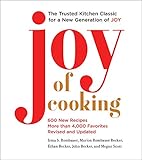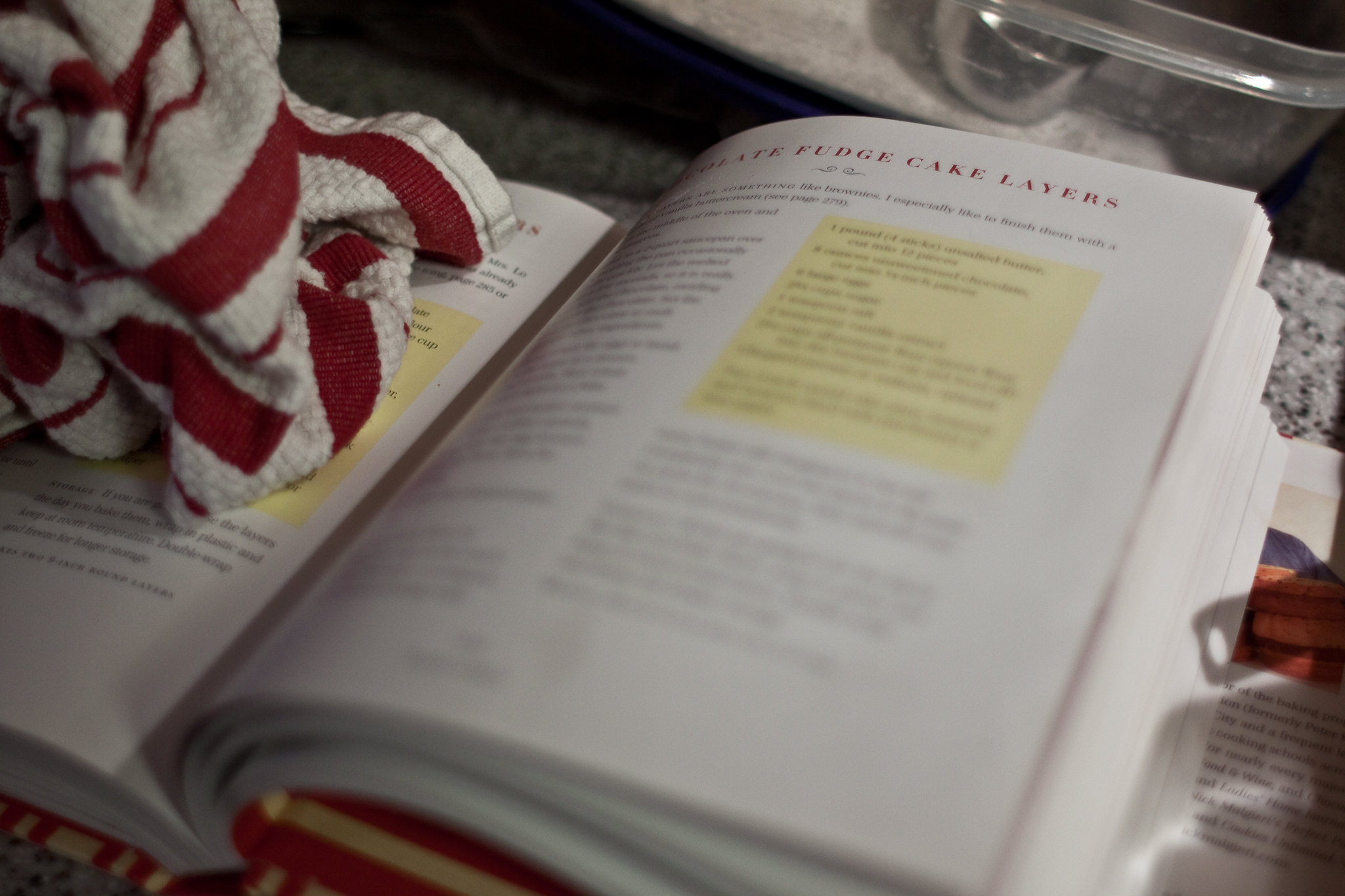My daughter’s birthday comes in June. Every year since the first year, I’ve made her a birthday cake—strawberry shortcake, which seemed appropriate for the summery month, her love of berries. The cake became an instant tradition, as many things with children instantly do. It’s a Hot Milk Sponge Cake, berries macerated in sugar, whipped cream. It isn’t a shortcake, which is commoner. And it isn’t better than another sponge cake recipe I have, one that’s quicker, easier, requiring fewer ingredients and less time. But I keep going back to the Hot Milk Sponge, because of the recipe.
 Not the ingredients. Not taste. The paper with the handwritten recipe itself. Because it reminds me of Betty, a long ago boyfriend’s mother, the woman who first made the cake, then wrote out the recipe for me. The writing’s faded, the green lined paper it’s written on going waxy with age. I’ve typed it out against the possibility that one day I’ll open my Joy of Cooking, where I store recipes I’ve cut out of magazines or printed or that have been given to me like this one, and like an ancient Polaroid photo, it will have disappeared. And along with it, my connection to her.
Not the ingredients. Not taste. The paper with the handwritten recipe itself. Because it reminds me of Betty, a long ago boyfriend’s mother, the woman who first made the cake, then wrote out the recipe for me. The writing’s faded, the green lined paper it’s written on going waxy with age. I’ve typed it out against the possibility that one day I’ll open my Joy of Cooking, where I store recipes I’ve cut out of magazines or printed or that have been given to me like this one, and like an ancient Polaroid photo, it will have disappeared. And along with it, my connection to her.
Because what I’m looking for when I hunt through my recipe collection isn’t really Hot Milk Sponge Cake. It’s a connection to my personal history, a road map of where I’ve been and who I’ve known. Recipes are connectors, the roads too small to show on maps.
 And they aren’t all written down. Like The Odyssey or a Studs Terkel interview, they can be passed along in other ways.
And they aren’t all written down. Like The Odyssey or a Studs Terkel interview, they can be passed along in other ways.
When my mother-in-law died, we had a small service with food afterwards. It was mostly family, a few close friends. Her friend Anita was there. They’d known each other for more than 50 years, and Anita was very upset. I extended a hand, reached out to touch her shoulder, but she didn’t want consolation.
After the service, we ate the food we’d carried there. I’d brought egg-and-onion, a dish my grandmother made. She knew it was a dish I loved, and when I was coming, she made it for me. It is how some people show love, by giving you the things they know you like to eat: that repetition. I once told someone I liked her lemon meringue pie. She made it every time she saw me after that.
I’ve updated my grandmother’s dish — I make it with olive oil, though she likely used chicken fat. Mine is lighter, less deadly. Anita had some after the service.
“Who made this?” she said. “I haven’t tasted this taste since my mother died.”
I told her its history — the part about my grandmother, the part about the olive oil. I’ve told this story many times, I am fluent in it.
“It’s so good,” Anita said, and said again. Later, she asked me for the recipe. I sent it to her. It comforted her in a way she couldn’t otherwise be comforted. And it connected us — me to my grandmother, Anita to her mother, the two of us to each other.
In the front of my Joy of Cooking is a recipe, in her hand, for Elizabeth’s Raspberry Buns. I make them smaller than she did, and my daughter and I renamed them Thumbkins, because you push a floured thumb into the center of each ball of dough before filling it with jam, but what I remember when I make them is Elizabeth herself, the antique samplers she collected and hung on her walls, the lunches and dinners we had together.
There is Andy’s rice salad, written on a piece of stationery so familiar to me it trips longing to be in their house whenever I see it.
There is a recipe in my own handwriting on the back of a piece of paper with notes from a biography of Margaret Mead I wrote and published years ago. There I am.
Recipes are a way of bridging metaphorical distance too: another way they are like maps. On Thanksgiving, we go to Kate’s house, where a table is set for 20 or more—some who wander in because they are temporarily or otherwise without family, others who always come. Everybody brings food.
Last year I made a green bean casserole, the kind my aunt always made at Thanksgiving when I was a girl out of canned soup and crispy canned onions. I made a version that used fresh everything and I brought it to Kate’s and two of the other women there came over and said How did you do it?! We’ve been trying to make a good version of this for 25 years! I told them what I’d done.
There I am again.
We are cooks, my friends and I: cooking is something that binds us and grounds us. My sister takes cookbooks to bed, reads them the way other people read novels. My daughter and I like biographies, or volumes of letters about/by people who’ve made their lives in food—James Beard, Ruth Reichl, Amanda Hesser. Recipes, like maps, give you places to go, tell you how to get there.
I’ve been friends with Tessa since childhood, we’ve had many many meals together. I ate the wonderful food her mother prepared when we were girls; now I cook some of it. We’ve cooked together and separately, with and for each other. The orange marmalade she and Andy make every year, a long, painstaking process. My pasta with tomatoes and breadcrumbs. Her cinnamon rolls.
A few Saturdays ago we were speaking on the phone. We hadn’t talked in a while, we had things to catch up on, some difficult. We are at an age where, often, things are difficult—work, aging parents, questions of health. Things that made me feel cracked with sadness. And then we talked about lentil soup.
How much better it is made with tiny green lentils than the musty brown kind. How I like to make it thick and put tomatoes and vegetables in it and serve it over rice.
We were reassuring each other. Patting our way back to the beginning of adult life, when we both first started to cook—to continue the traditions of food we’d grown up with or to transcend them, begin our own. My egg and onion isn’t my grandmother’s. My green bean casserole isn’t my aunts. But they also are. Food—recipes—are what we talk about when we are telling each other: I’m here. It’s okay. Life, despite sadness, has this in it too.
Recipes themselves appeal to me because they are small and finite: little works. You set yourself a goal, pursue and finish it, it doesn’t take very long. That’s the opposite of what I spend my time doing. The longest, most complicated recipe I ever made took me a day. A novel takes years.
But recipes connect me to people too, both people I don’t know (Beard, Reichel, Hesser) and people I do — all the people who took the time to write out a recipe for something I loved, something they’d first prepared for me—friends, my aunt, my once-upon-a-time boyfriend’s mother. I haven’t always made the recipes. But it’s the handwriting, the road that travels both forward and back, that’s important to me.
When we were talking about lentil soup, Tessa told me Zina, her daughter, had made one with coconut and lemon grass.
“That sounds delicious,” I said. “Will she send me the recipe?
And when my daughter calls and says she wants me to teach her to make a certain dish my heart expands.
She once asked me what the most valuable thing I had was. I wanted to say “you,” but she was too old for that answer to satisfy. She meant something tangible—silver, paintings, pearls.
I don’t have things like that, or miss them or crave them, nothing spectacular to leave her. But if I had said to her then “It’s my old Joy of Cooking, stuffed with recipes,” I don’t think she would have understood it. Now I think she will. Because inside the front cover of that book is her past and mine and my grandmother’s. Tastes she’s grown up with, things she can give her children when they come. A true inheritance.
Oh, look, she’ll say one day, thumbing through the recipes. Hot Milk Sponge Cake. I remember that.
Image credit: Flickr/billhr.










